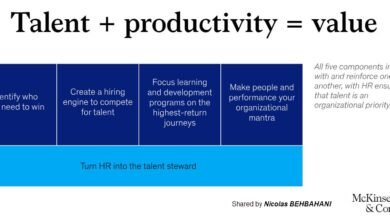
By | Hayley Hoskins
As the custodians of employee welfare and regulatory adherence, HR professionals face a myriad of challenges that demand a nuanced understanding of intricate laws and regulations.
The complexities of HR compliance have reached unprecedented levels, requiring HR leaders to navigate a labyrinth of rules while ensuring the organization’s practices remain ethically sound and legally compliant.
From deciphering relevant compliance requirements to upholding anti-discriminatory hiring practices and beyond, the journey of HR compliance is both intricate and indispensable.
In this article, we’ll delve into the five toughest HR compliance issues HR leaders are confronting today, shedding light on the complexities they face and offering insights into navigating this challenging terrain with diligence and expertise.
Identifying Relevant Compliance Requirements
Navigating the intricate web of compliance regulations can be daunting for HR leaders. Each organization faces a unique set of rules and regulations that govern its operations. From federal mandates like the Fair Labor Standards Act (FLSA) to state-specific laws governing minimum wage and overtime, HR professionals must meticulously identify which compliance requirements apply to their organization.
This task involves understanding the intricacies of various laws and regulations, some of which may leave room for interpretation. For instance, while certain laws like employment taxes are universal, others, such as the interpretation of FMLA or determining whether an intern should be paid, may require a deeper understanding.
Moreover, the size of the business also plays a crucial role, as compliance laws often differ based on the number of employees, with specific thresholds triggering additional requirements.
To navigate this complexity, HR leaders can leverage comprehensive HR compliance checklists that serve as roadmaps, guiding them through the maze of regulations and ensuring nothing falls through the cracks.
Comprehensive Documentation
One of the foundational pillars of HR compliance is having meticulously documented policies and procedures in place. This documentation should encompass various aspects of HR operations, including employee benefits, payroll management, recruitment processes, and more.
In addition to traditional document storage methods, organizations should consider implementing robust email archiving solutions. Email communication plays a crucial role in HR operations, including correspondence related to employee benefits, payroll management, and recruitment processes.
By archiving emails in a secure and accessible manner, organizations can maintain a thorough record of communications, facilitating compliance audits and investigations when necessary.
Additionally, email archiving helps mitigate the risk of data loss and ensures that important information is preserved for future reference, further enhancing organizational transparency and accountability.
Employee Benefits Regulations
Employee benefits are a cornerstone of attracting and retaining talent within an organization. However, HR leaders must navigate a complex landscape of federal and state regulations governing these benefits.
Mandatory benefits, such as Social Security, Medicare, and unemployment insurance, are governed by federal laws, while states may impose additional requirements, such as disability insurance.
Additionally, the Affordable Care Act (ACA) introduced further complexities, particularly for applicable large employers (ALEs), who must provide adequate and affordable health coverage to their full-time employees.
Compliance with these regulations is not merely about offering benefits but also ensuring they align with legal obligations. HR leaders must stay abreast of evolving laws and regulations, adapting benefit offerings accordingly to remain compliant and competitive in attracting top talent.
Wage Law Compliance
Managing payroll is a multifaceted task that demands meticulous attention to detail. Payroll laws are constantly evolving, requiring HR leaders to stay updated to ensure compliance. From income tax withholding to Social Security taxes and unemployment taxes, there are various taxation challenges that HR professionals must navigate.
Accuracy is paramount when calculating payroll, as even a small error can lead to disgruntled employees and legal consequences. Accurately tracking employee attendance and time off is another critical aspect of payroll management, ensuring that employees are compensated correctly for their work.
To streamline this process, many organizations opt to implement HR software solutions that automate payroll calculations and attendance tracking, minimizing the risk of errors. Additionally, outsourcing payroll functions or partnering with Professional Employer Organizations (PEOs) can provide valuable support, allowing HR leaders to focus on strategic initiatives while ensuring compliance with wage laws.
Upholding Anti-Discriminatory Hiring Practices
The recruitment process is fraught with potential compliance pitfalls, particularly as organizations increasingly rely on remote work and virtual interviews. HR leaders must ensure that hiring practices adhere to anti-discrimination laws, both in-person and in virtual settings.
Questions related to personal matters, such as marital status or religious beliefs, can inadvertently lead to discriminatory hiring practices, highlighting the importance of education and training for both executives and hiring managers.
With remote hiring becoming more prevalent, HR leaders must adapt to new challenges in maintaining compliance during virtual interviews, ensuring that all candidates are treated fairly and equitably.
Creating a culture of compliance in the hiring process is essential to avoid legal complications and safeguard the organization’s reputation as an equal-opportunity employer.
Proper Worker Classification
Worker classification remains a contentious issue for HR leaders, as federal and state laws often lack precise definitions for terms like “full-time,” “part-time,” and “temporary” employees. Misclassification can lead to eligibility issues regarding benefits, overtime pay, and tax status, exposing organizations to potential legal liabilities.
To mitigate confusion and legal risks, HR leaders should establish clear and consistent employment classification policies throughout the organization. This involves carefully evaluating the nature of the work performed, the level of control exerted by the organization, and other factors outlined in relevant laws and regulations.
By ensuring accurate worker classification, organizations can uphold their legal obligations and ensure that employees receive the benefits and protections they are entitled to under the law.
Over to You
To ensure HR compliance, organizations can adopt best practices such as comprehensive documentation, continuous employee communication, HR assessments, staying informed about regulatory changes, and engaging experienced consultants. These strategies empower HR leaders to navigate compliance complexities while fostering integrity within their organizations.






